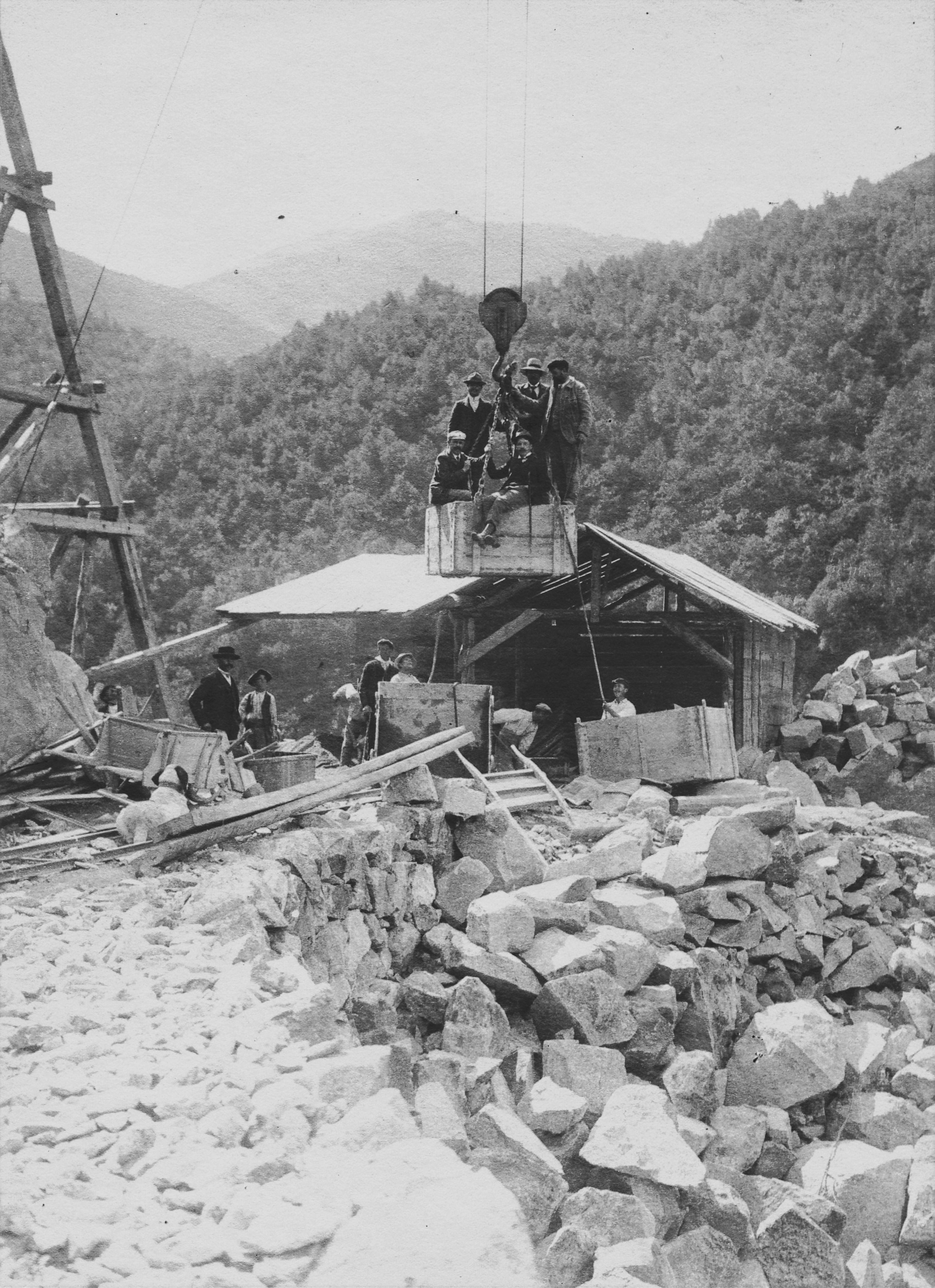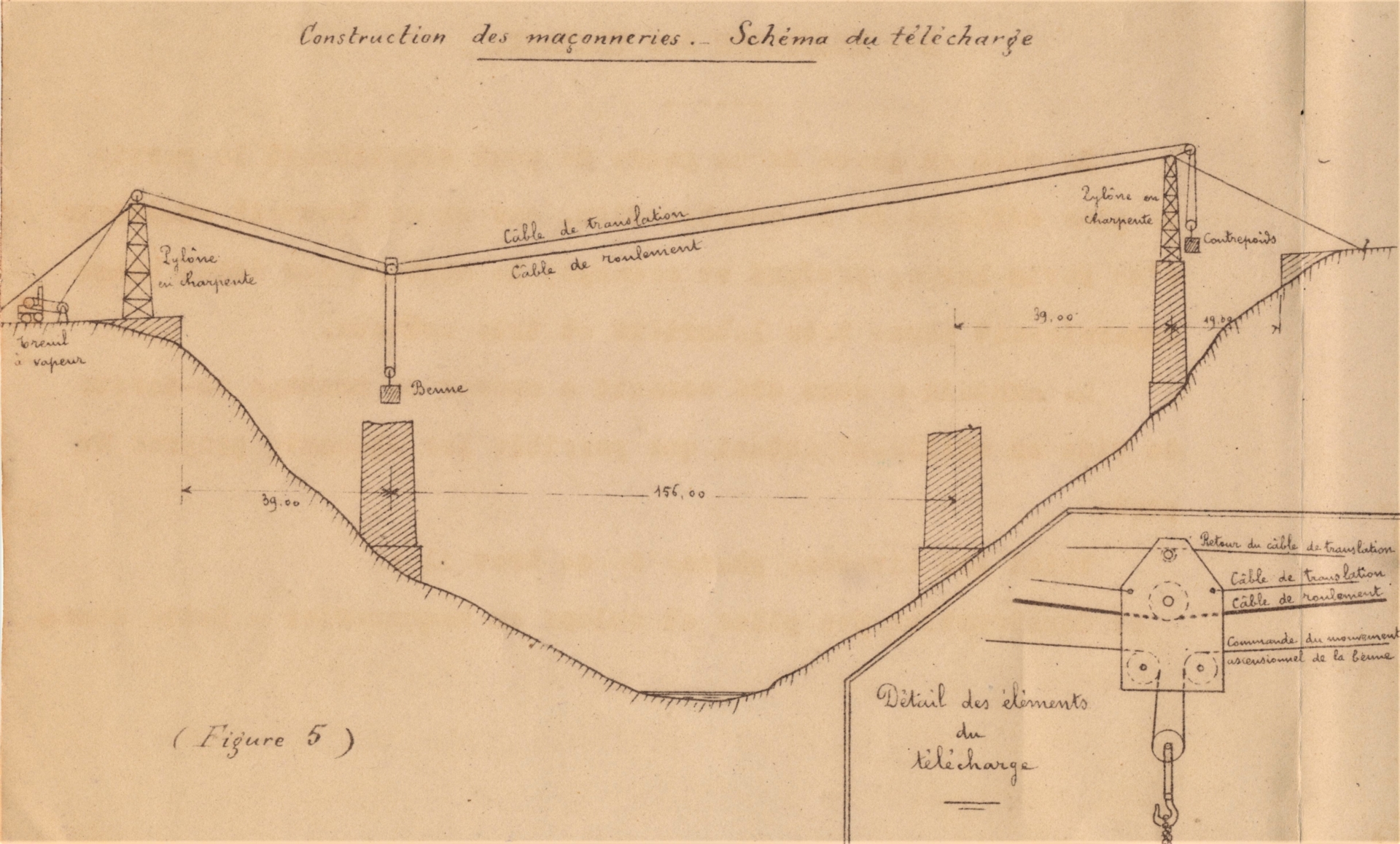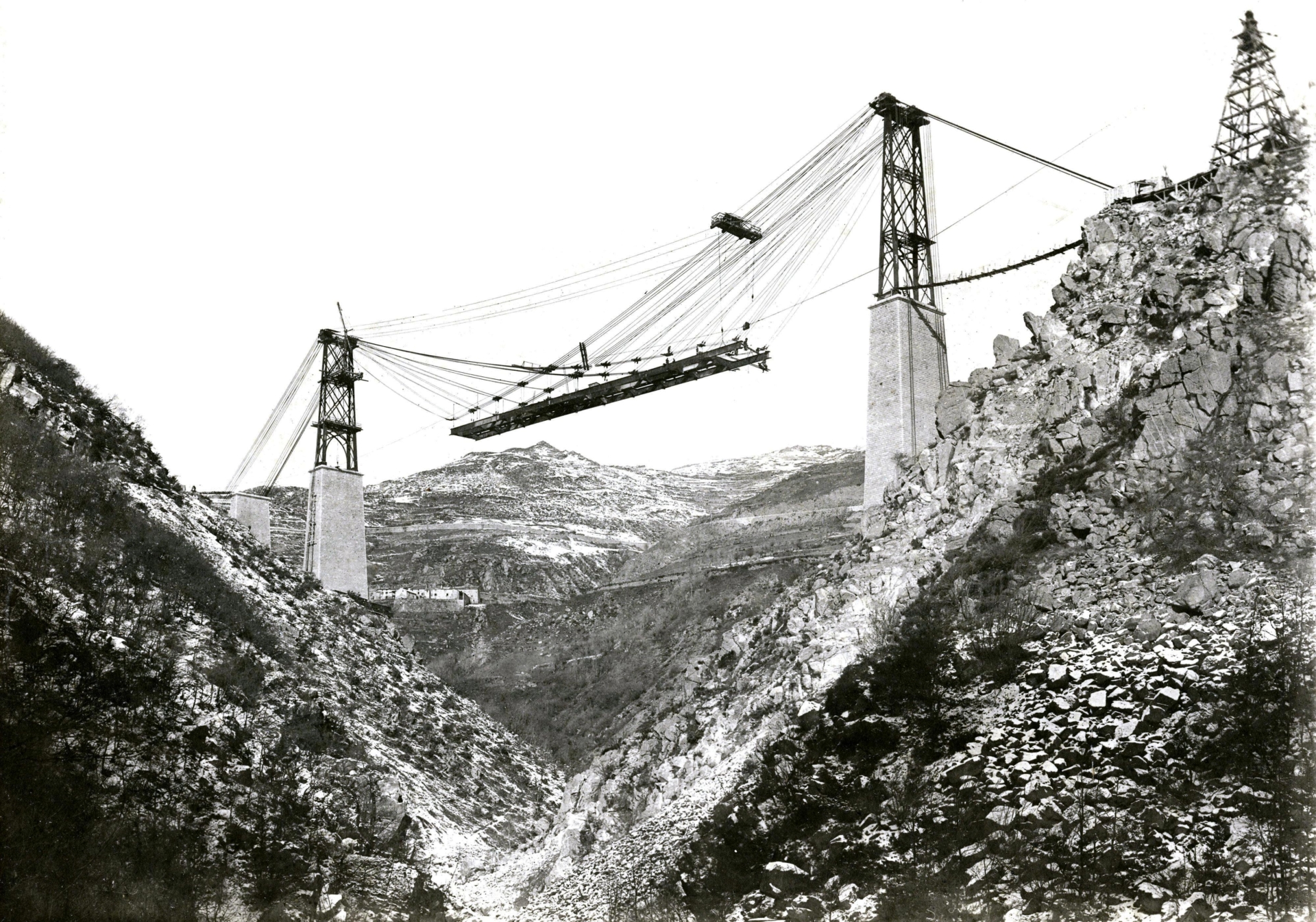With this section and the collection ” Les Carnets du Train Jaune ” (Yellow Train Notebook, Ed. Talaia), we offer a retrospective, a journey back in time through the construction of the Yellow Train line and its history. This collection is the result of collaboration between the Parc Naturel Régional des Pyrénées-Catalanes and historians Pierre Cazenove and Jean-Louis Blanchon.
In this second part, we take a closer look at one of the technical feats of the Yellow Train line : construction of the Gisclard bridge !
Work on the Gisclard bridge
In the early 20th century, the colossal task of opening up the Cerdanya region through the creation of a railway line was gradually sculpting the Catalan mountains. From Villefranche-de-Conflent, the tracks began to run along the particularly steep mountainsides. In the Haut-Conflent valley, the project brought about a genuine revolution. This isolated land cautiously welcomed workers from the most diverse backgrounds.
Few lines, even in mountainous regions, have such a steep (if picturesque) route as the Yellow Train. The choice of electric traction was soon made, as was the type of bridges and engineering structures to span the course of the Têt. Here, too, the solutions adopted demonstrate the talent of the engineers, in particular the designers of two of them, the Fontpédrouse viaduct (Séjourné viaduct) and La Cassagne suspension bridge (Gisclard bridge), also offering a remarkable aesthetic in terms of railway architecture. The Yellow Train’s designers used the most advanced transport and public works technologies of the time. This was particularly true of the Gisclard bridge.

Installing this type of bridge was the most delicate part of the construction, as it was located over a wide, deep, steep ravine. Here are the various phases of this work :
- Constructing the masonry piers and abutments.
This construction presented no particular difficulties. The foundations were built on rock.

- Erecting the metal pylons.
The downloader brought the various components needed for assembly to the site (using battery power). A self-elevating crane was set up to install the cross-beam sections and latticework forming the first stage of the pylon.

- Suspension mounting.

- Duration of metal works.
The pylons took two months to erect, while the suspension and deck took around eleven months. The La Cassagne suspension bridge was designed by Engineering Chief Gisclard, who invented the system. It was executed by Mr Arnodin, a construction engineer specialising in suspension bridges such as at Châteauneuf-sur-Loire (Loiret).
The elements of La Cassagne bridge were manufactured by Arnodin of Châteauneuf-sur-Loire. All the parts needed to build the pylons and deck were machined and then ” trial “-assembled in the workshops. This involved pre-assembly using bolts, to check the assembly against the plans drawn up by the engineers.
While the construction of the metal section of the Gisclard bridge was accident-free, the same cannot be said for the masonry section. The Moreau-Duran company was entrusted with constructing the 3 piers that would form the ground supports for the future structure. Masons, stonemasons (known aspicapedrers), carpenters and simple peasants who offered their services to improve their financial resources were hired and worked under difficult conditions. The story of one of them, a native of Fontpédrouse, is told by his granddaughter : (family souvenir, APPCF Bulletin no.15. JP. And .NJany)
« Joseph Labric was hired as a labourer, along with many other men from the village, to work on the Gisclard viaduct. One day in 1905 or 1906, he was told to fetch water from the river (was he the youngest ? Was it his turn?), so he set off down… The sound of rolling stones, a loud scream, a stone hit him on the head and the wound left him unconscious, his skull cracked open. His comrades, who ran down to him, took him for dead, pulled his body up by the road and threw a blanket over him. In the evening, after work, they took Joseph’s body back to Saint-Thomas and lay it on the table in the main room.
His mother, distraught with grief, wouldn’t believe her child had died and refused to allow a death chamber to be set up ; she asked someone to fetch the doctor, from Mont-Louis, of course. When he arrived a few hours later, he noticed a breath of life, and there, on the table, he performed a trepanation that would save Joseph ».
